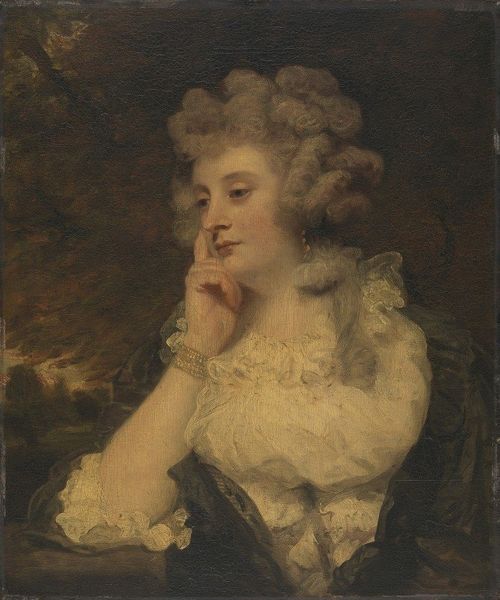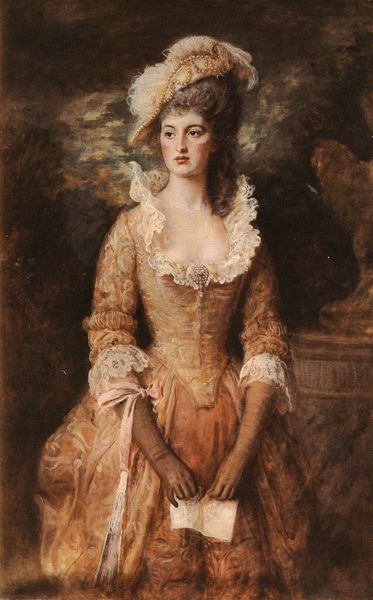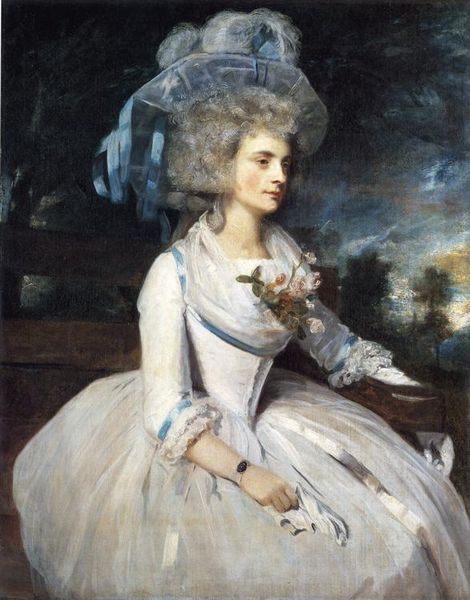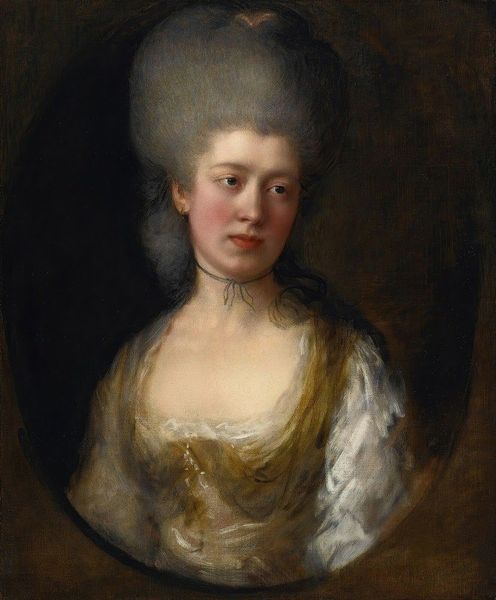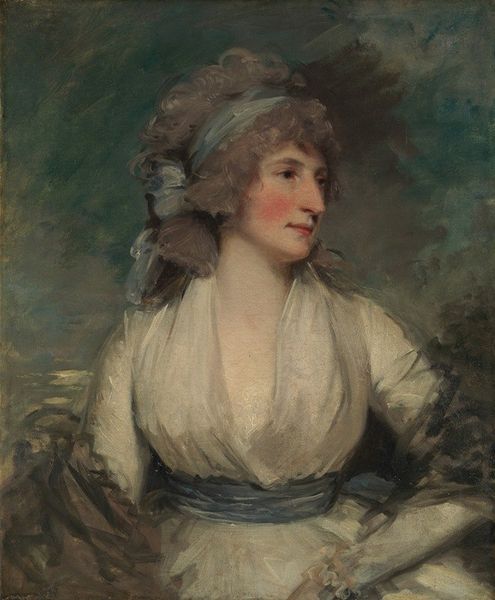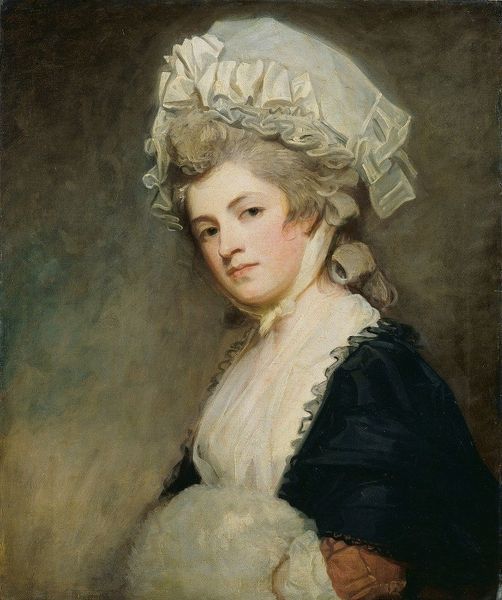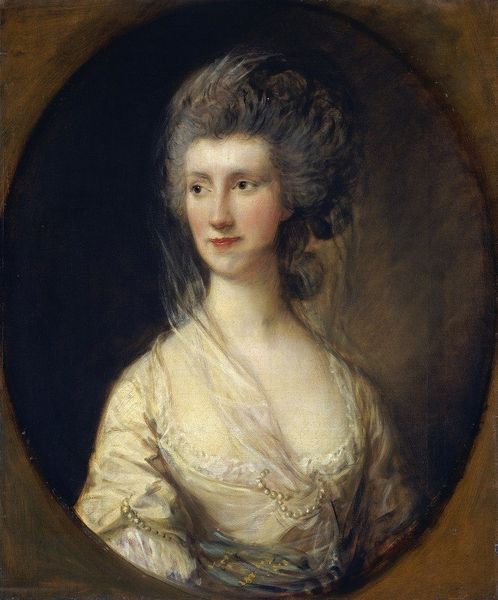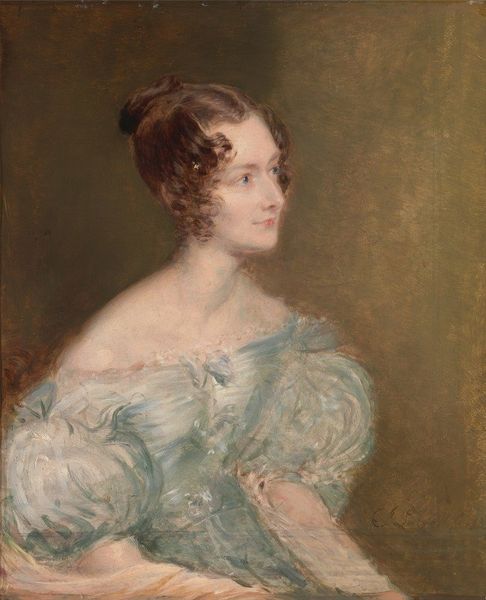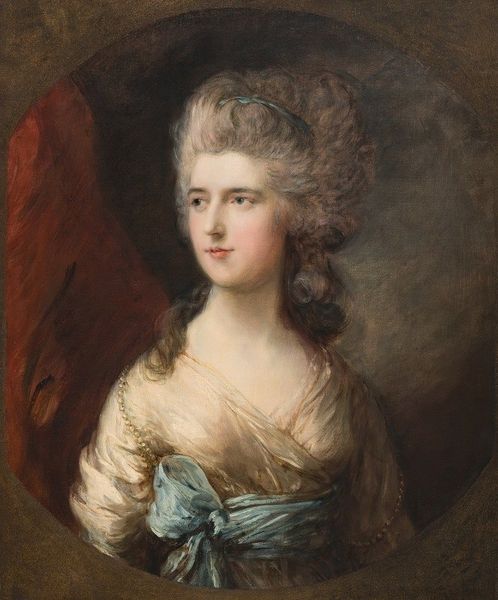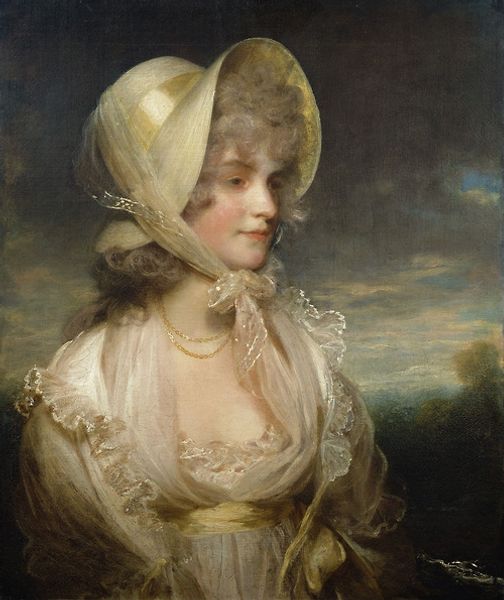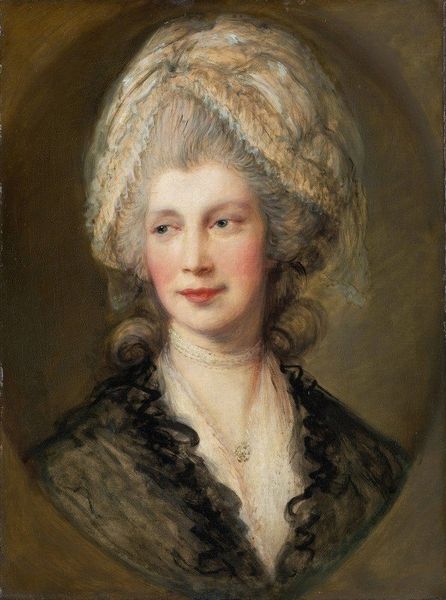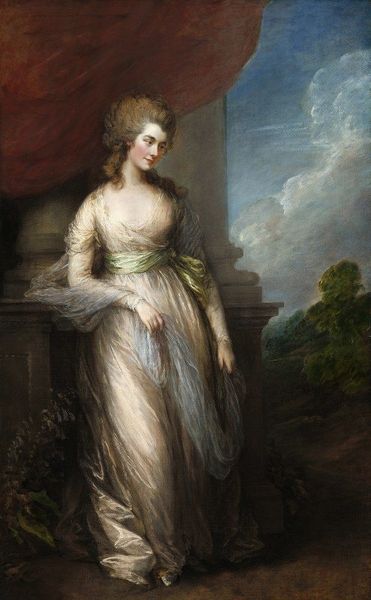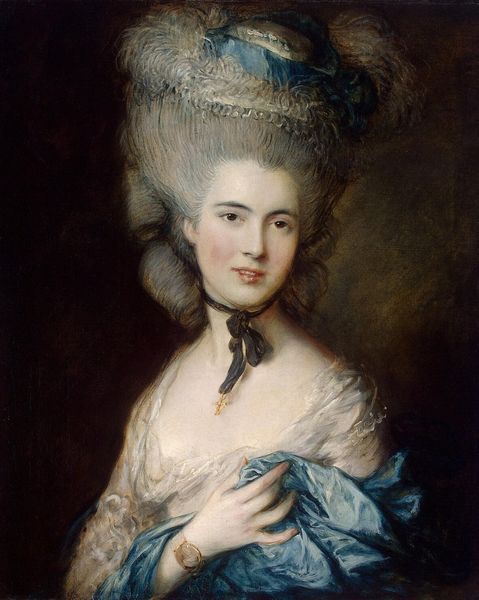
painting, oil-paint
#
figurative
#
painting
#
oil-paint
#
oil painting
#
romanticism
#
15_18th-century
#
history-painting
#
portrait art
#
rococo
Copyright: Public Domain: Artvee
Curator: Before us is "Madame Lebrun," an oil painting attributed to Thomas Gainsborough. Note the sitter's elegant pose. Editor: It’s striking. The ethereal quality of the white dress against that muted background immediately draws my eye, creating a sort of luminous contrast. It almost vibrates. Curator: The artist orchestrates our gaze with deliberate contrasts: the fluidity of the brushwork against the structural integrity of the figure's placement. Semiotically, the flowing lines connote movement and ease. Editor: I find the portrait interesting as it depicts a woman during an era where women’s positions in society were becoming more visible and open. One ponders on how portraits immortalizing women contribute to societal discourse and perceptions of women in art history. Curator: Certainly, history provides a crucial backdrop, but focusing solely on socio-political narratives risks overshadowing the pictorial elements themselves. Observe how Gainsborough manipulates texture, allowing brushstrokes to evoke both the dress's gossamer quality and a certain immediacy. It verges on abstraction. Editor: Yet, even that "abstraction" reflects contemporary tastes. The rococo and burgeoning romantic sensibilities privileged emotion and subjective experience, influencing art's purpose and shaping cultural expectations around gender and beauty. This painting serves as evidence of women who found themselves placed to serve as subjects in the painting. Curator: Granted, but isn't it more complex? We see this artwork, first and foremost, as a configuration of shape and tone. Notice how Gainsborough plays with light, modelling form, especially in her face and hands. He directs and holds the viewers' gazes on a certain path. Editor: Light certainly plays a role here. Considering where this artwork was likely displayed—the domestic settings of the wealthy elite, most likely—it acted as a statement, both a work of art and social affirmation. It presents the world, then as much as now, with very certain societal roles to play. Curator: I appreciate your pointing that out. Reflecting on it now, it is compelling how Gainsborough creates not merely a likeness, but a structured experience, demanding both our aesthetic and historical considerations. Editor: Exactly, by appreciating the painting as both a piece of art, but also how it fits within cultural zeitgeist and how the woman is presented can let us fully engage with its significance.
Comments
No comments
Be the first to comment and join the conversation on the ultimate creative platform.
